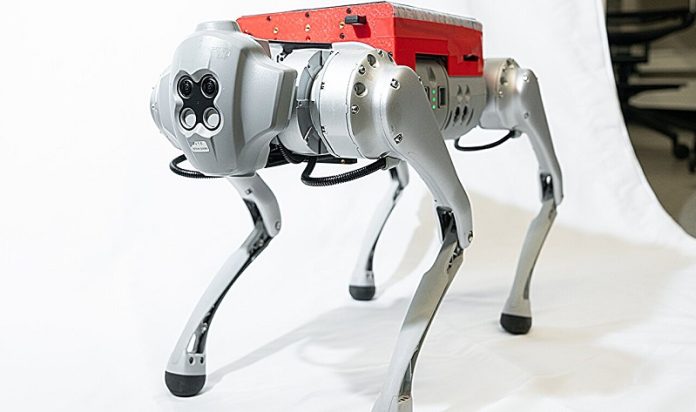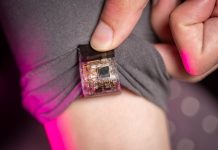
Anyone who has ever packed a moving truck knows how important balance is.
If even one item is placed badly, it can shift, fall, and break during the drive.
Humans usually handle this kind of problem without much thought, thanks to the way our muscles, inner ears, and sense of touch work together to keep objects steady.
For robots, however, carrying a loose object is far from simple. They must constantly track the object’s position and adjust their own movements to stop it from sliding or tipping off.
Now, researchers at Carnegie Mellon University have developed a new type of touch-sensitive technology that helps a four-legged robot carry unsecured objects on its back, much like an animal carrying a load.
This breakthrough could make robots far more useful in real-world environments.
In the past, quadruped robots usually had to rely on boxes, straps, or containers to hold items in place. That limited what they could carry and how they could move. The new system, called LocoTouch, changes that.
It is a special sensor that covers the robot’s back and acts like a form of electronic skin. This “skin” can detect where an object is, how much pressure it is applying, and how it is shifting as the robot moves.
The sensor works using a thin, pressure-sensitive film placed between two layers of conductive fabric. These layers form a grid with many tiny sensing points.
When an object on the robot’s back moves, it slightly presses and bends the film. This causes a change in electrical resistance, which is detected by the sensors. The robot uses this information to figure out exactly how the object is positioned and how it is moving in real time.
To train the robot, the researchers created more than 4,000 digital versions of the robot and ran simulations where objects moved around on its back in many different ways.
Using a method called reinforcement learning, the robot “learned” how to adjust its body to keep the object balanced, whether it was sliding forward, tipping to the side, or being bumped by something. Once the training was complete, these skills transferred to the real robot without the need for extra adjustments.
In test runs, the robot successfully carried different types of cylindrical and irregularly shaped objects over distances of more than 60 meters. It walked around cones, stepped over obstacles, and even handled situations where a person pushed the object on its back. Each time, it adjusted its movement to keep the load stable.
The researchers believe this technology could help robots become more useful helpers in everyday spaces. In the future, similar sensors could be placed over an entire robot’s body, giving it a more human-like sense of touch. This would allow robots to handle more complex tasks safely and smoothly.
Beyond home use, this kind of robot could carry scientific equipment into dangerous or hard-to-reach areas, such as landslide zones or disaster sites. It could also have applications in hospitals, warehouses, and factories. One day, this smart, touch-sensitive technology might even be used in vehicles to help keep items stable during transport.
By giving robots a better “sense of touch,” scientists are bringing them one step closer to understanding and working within the human world.
Source: Carnegie Mellon University.



